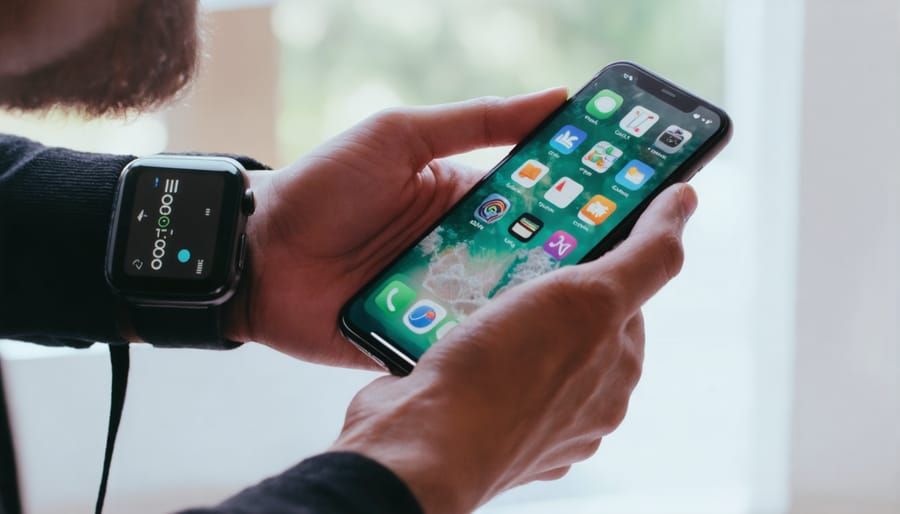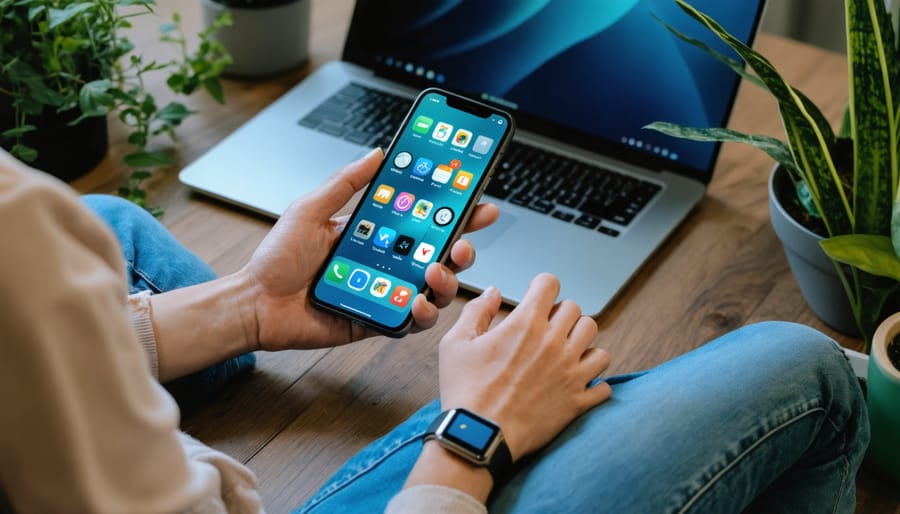Digital wellness represents the careful balance between technology use and overall well-being in our increasingly connected world. It encompasses how we interact with digital devices and platforms while maintaining our physical, mental, and emotional health. As Canadians spend an average of 11 hours daily on screens, understanding digital wellness has become essential for preventing technology-related health issues and fostering a healthier relationship with our devices.
This modern health concept extends beyond simple screen time management to include mindful technology use, digital boundaries, and the integration of tech-free moments into daily life. Digital wellness encourages us to harness technology’s benefits while protecting ourselves from its potential negative impacts, such as digital eye strain, poor posture, sleep disruption, and technology-induced stress.
The goal is not to eliminate technology but to create sustainable habits that support our overall health while staying connected in our digital age. By understanding digital wellness, we can make informed choices about our technology use and maintain better control over our digital lives.
What is Digital Wellness?

Core Components of Digital Wellness
Digital wellness comprises several essential components that work together to create a balanced and healthy relationship with technology. At its foundation is digital literacy, which enables you to understand, evaluate, and effectively use digital tools and information. This includes knowing how to verify online information sources and protect your privacy while navigating the digital world.
Healthy tech habits form another crucial element, encompassing mindful device usage and the ability to set appropriate boundaries with technology. This means establishing regular digital breaks, maintaining proper posture while using devices, and creating tech-free zones or times in your daily routine.
Online well-being focuses on maintaining positive digital interactions and protecting your mental health in virtual spaces. This includes managing social media consumption, fostering meaningful online connections, and avoiding digital harassment or negative online behaviour.
Physical wellness considerations are equally important, such as preventing eye strain through proper screen positioning and lighting, using ergonomic equipment, and staying physically active despite the sedentary nature of digital activities.
The final component involves digital security and safety practices, ensuring your online activities don’t compromise your personal information or well-being. This includes using strong passwords, recognizing potential online threats, and maintaining a healthy skepticism toward suspicious digital content.
These core components work together to support your overall digital wellness, helping you maximize the benefits of technology while minimizing its potential negative impacts on your health and well-being.
Digital Wellness in Your Daily Health Routine
Mental Health and Digital Balance
Digital wellness plays a crucial role in maintaining mental health by promoting mindful and balanced technology use. When we approach our digital interactions thoughtfully, they can complement other mind-body therapies and support overall emotional well-being. This involves setting healthy boundaries with technology, recognizing digital stress triggers, and developing strategies to maintain mental clarity in our connected world.
Creating a healthy relationship with technology means being aware of how digital interactions affect our mood, stress levels, and sleep patterns. Simple practices like scheduling regular digital breaks, turning off notifications during focused work or relaxation time, and establishing tech-free zones in your home can significantly impact mental wellness.
It’s important to remember that digital wellness isn’t about completely disconnecting – it’s about finding the right balance. This might include using mindfulness apps constructively, participating in online support communities, or utilizing digital tools that enhance rather than detract from mental health. The goal is to harness technology’s benefits while protecting our psychological well-being.

Physical Health Tracking
Digital tools have revolutionized how we monitor and improve our physical health, making it easier than ever to track fitness goals and nutritional intake. Modern smartphones and wearable devices can accurately count steps, measure heart rate, monitor sleep patterns, and calculate calories burned during activities. These digital solutions provide real-time feedback and data-driven insights that help users make informed decisions about their health.
Many fitness apps now offer personalized workout plans, video demonstrations, and progress tracking features that adapt to individual fitness levels and goals. For nutrition monitoring, digital food diaries and meal-planning apps help users maintain balanced diets by tracking macro and micronutrients, water intake, and portion sizes.
The key to successful physical health tracking lies in choosing tools that match your lifestyle and health objectives. Whether you’re tracking daily movement, planning meals, or monitoring vital signs, these digital solutions can help establish healthy habits and maintain accountability. By regularly reviewing your health data, you can identify patterns, adjust your routines, and celebrate progress toward your wellness goals. Remember to share relevant health data with healthcare providers to ensure a comprehensive approach to your physical well-being.
Building a Healthy Digital Lifestyle
Setting Digital Boundaries
Setting digital boundaries involves creating deliberate limits around your technology use to maintain a healthy balance in your daily life. Start by designating tech-free zones in your home, such as the dining room or bedroom, and establish specific times when devices are off-limits, like during meals or an hour before bedtime. Use built-in screen time tracking tools to monitor your usage and set realistic daily limits for social media and other apps. Consider implementing a “digital sunset” by turning off notifications after a certain hour and keeping devices out of reach during important activities or family time. These boundaries help prevent digital overwhelm while promoting better sleep, improved focus, and more meaningful real-world connections.

Digital wellness is a vital component of our modern health journey, encompassing both our relationship with technology and its impact on our overall well-being. By understanding and implementing digital wellness practices, we can create a healthier balance between our online and offline lives. Remember that small steps, such as setting screen time limits, creating tech-free zones, and practicing mindful device usage, can lead to significant improvements in your physical and mental health. Start your digital wellness journey today by choosing one area to focus on and gradually building healthy digital habits. With consistent effort and awareness, you can harness technology’s benefits while maintaining your well-being in our increasingly connected world. Your path to digital wellness is personal and evolving – embrace the journey and adjust your approach as needed to support your health goals.

